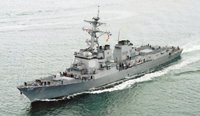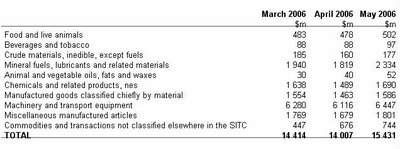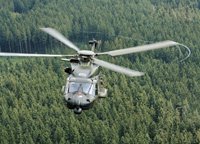$ 51 BILLION DEFENCE CAPABILITY PLAN FOR 2006-2016

LATEST AUSTRALIAN BUSINESS NEWS
 The Australian government has today released its the public version of the Defence Capability Plan (DCP) 2006-16. It outlines more than $51 billion of major capital equipment proposals which are planned to be evaluated by Government over the next decade. This DCP provides many opportunities for US based businesses seeking entry into the Australian defence procurement program. The proposals it contains are essential to deliver the capability required by the Australian Defence Force (ADF) to maintain
The Australian government has today released its the public version of the Defence Capability Plan (DCP) 2006-16. It outlines more than $51 billion of major capital equipment proposals which are planned to be evaluated by Government over the next decade. This DCP provides many opportunities for US based businesses seeking entry into the Australian defence procurement program. The proposals it contains are essential to deliver the capability required by the Australian Defence Force (ADF) to maintain
The recent 2006/2007 Federal Budget announced investment of an additional $2.4 billion over financial years 2011-12 to 2015-16. This continues the additional 3 per cent funding over 10 years announced by the Government in the 2000 Defence White Paper. The additional funding by Government enables the DCP 2006-16 to address the rise in the price of military platforms and technology. Providing a public version of the Defence Capability Plan to Australian industry is a key part of ensuring that the ADF will continue to have the major equipment and systems it needs to do its job.
The DCP 2006-16 is a major document produced periodically from an ongoing review of defence capability requirements.
Some of the major features of this public version of the DCP are:
* Modifying helicopter plans to reduce the number of aircraft types and to create a common joint training and management system. More than $3.7 billion of project funding has been set aside to achieve this aim.
* The addition of more than $500 million of new naval surface capability projects to enhance the ANZAC class air search radar system and to develop undersea warfare detection capabilities, and sea mine counter-measures in 2017 to 2019.
* A 40 per cent boost in funding for Army networking projects as part of the Hardened and Networked Army initiative. The networking enhancements will support Network Centric Warfare capability and are to be introduced across the majority of Army units. Better understanding of the requirements of the Land 17 phase 1 project means that Army’s 105mm and 155mm artillery replacement will be safely deferred for three years whilst Army’s Ground Based Air Defence capability will be enhanced from around 2018 to 2020 in a new project valued at more than $750 million .
* Continuing the projects to support
* Building on the Government’s recent decision to acquire a heavy airlift capability, the DCP retains around $1 billion to refurbish or replace the C-130H Hercules and Caribou aircraft fleets. More detailed analysis of the lifespan of the Orion AP-3C means that the decision to refurbish or replace the ADF’s maritime patrol aircraft can be deferred for 2 years. This DCP also sees increased funding of more than $250 million for the Multi-Mission UAV project – AIR 7000 Phase 1B.
* Greater funding for the ADF’s military satellite communications capability with more than $1 billion to be invested in next generation satellite and ground station infrastructure to ensure continuity of service and flexibility through digital content.
* Continued improvements to Defence’s core enterprise systems including a new improved logistics management system project valued at more than $350 million and operational in 2012 to 2014.
David


